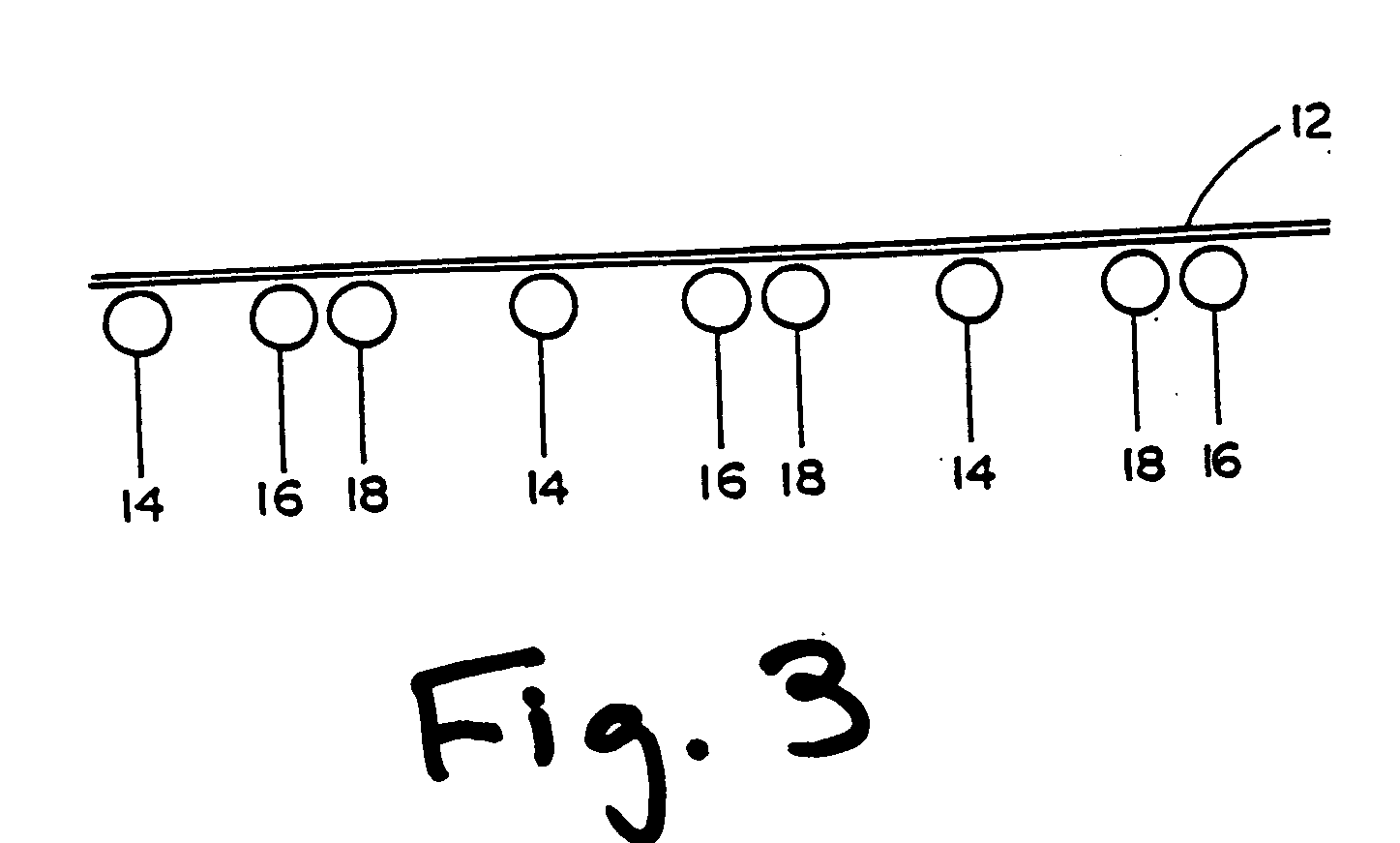Device and system for coating a surface and reducing surface irregularities
a technology of surface irregularities and devices, applied in the direction of carpet cleaners, cleaning equipments, cleaning machines, etc., can solve the problems of surface damage, health problems and environmental problems, and conventional coating compositions
- Summary
- Abstract
- Description
- Claims
- Application Information
AI Technical Summary
Benefits of technology
Problems solved by technology
Method used
Image
Examples
Embodiment Construction
[0058] The device according to the present invention comprises a foam pad impregnated with a composite with an ASTM:D217-82 cone penetration measurement from about 60 mm to about 250 mm at 25 degrees Celsius (77 degrees Fahrenheit). The foam pad may be any sufficiently durable and flexible foam material, cut to a convenient size for handling by the user. Examples of suitable foam materials include cellulose, silicone, and polyester. An. essentially oblong pad about 16 cm by 11 cm by 1 cm has been found effective. The composite comprises a flexible plastic matrix; one or more silicone fluids; one or more surface coatings; and a multiplicity of one or more types of abrasive particles. The invention may take the form of a system comprising the foam pad impregnated with the composite and further comprising rejuvenator fluid.
[0059] In the preferred embodiment, the device of the invention comprises a foam pad impregnated with the composite of the invention. The foam pad is shaped so that ...
PUM
| Property | Measurement | Unit |
|---|---|---|
| diameters | aaaaa | aaaaa |
| diameters | aaaaa | aaaaa |
| diameters | aaaaa | aaaaa |
Abstract
Description
Claims
Application Information
 Login to view more
Login to view more - R&D Engineer
- R&D Manager
- IP Professional
- Industry Leading Data Capabilities
- Powerful AI technology
- Patent DNA Extraction
Browse by: Latest US Patents, China's latest patents, Technical Efficacy Thesaurus, Application Domain, Technology Topic.
© 2024 PatSnap. All rights reserved.Legal|Privacy policy|Modern Slavery Act Transparency Statement|Sitemap



